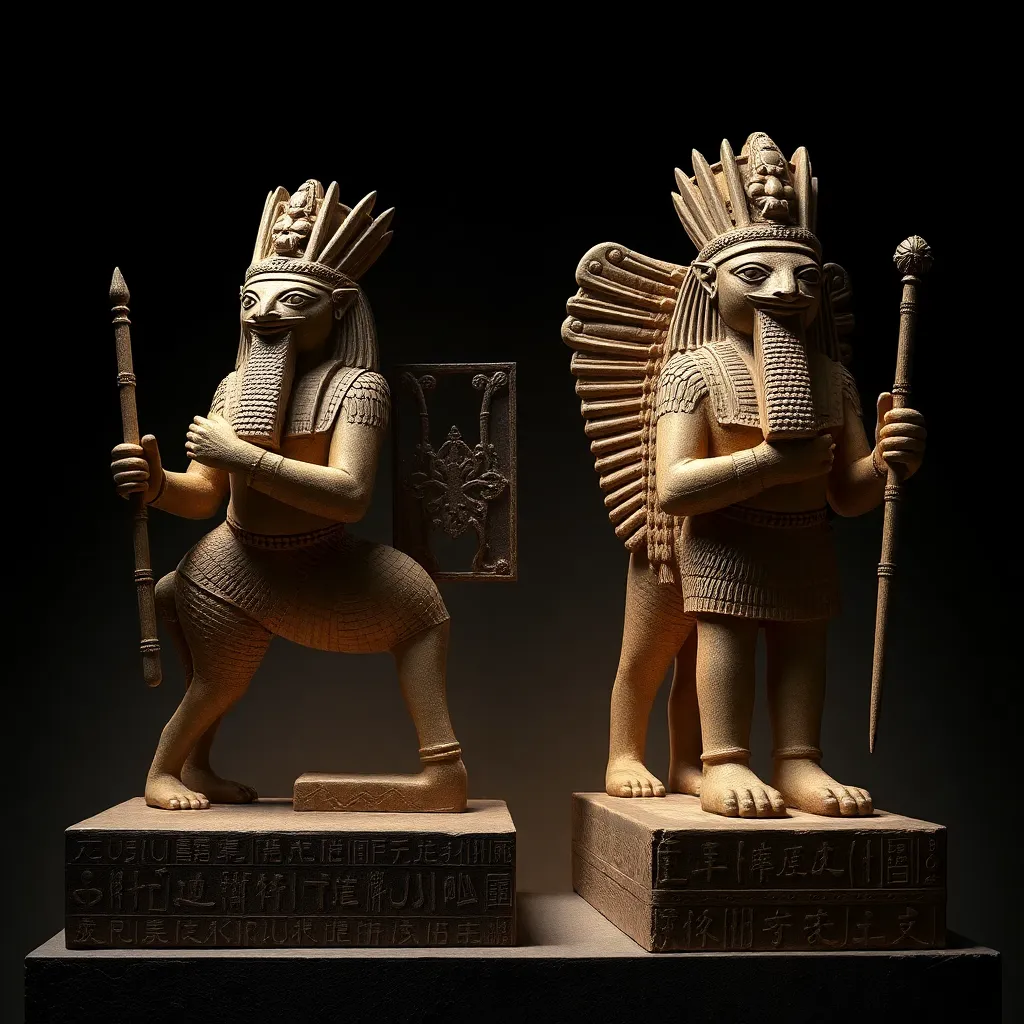From Gatekeeper to Protector: The Evolution of the Lamassu in Mesopotamian Art
I. Introduction
The Lamassu, a mythical creature with the body of a bull or lion, the wings of an eagle, and the head of a human, holds significant importance in Mesopotamian culture. This fascinating figure was more than just a decorative element; it served as a symbol of protection and authority, embodying the divine power that ancient civilizations believed governed their lives. This article will explore the evolution of the Lamassu’s role from a gatekeeper to a protector, highlighting its artistic and symbolic transformations throughout history.
II. Historical Context of Mesopotamian Art
Mesopotamia, often referred to as the cradle of civilization, was a melting pot of cultures, myths, and artistic expressions. Its artistic landscape was shaped by various factors:
- Cultural Diversity: Mesopotamia was home to numerous civilizations, including the Sumerians, Akkadians, Babylonians, and Assyrians, each contributing to a rich artistic heritage.
- Mythology and Religion: The region’s mythology and religious beliefs significantly influenced artistic expressions, with gods and mythical beings often depicted in various forms.
The Lamassu emerged within this context as a guardian figure, primarily associated with the ancient Near Eastern civilizations. Its introduction marked a pivotal moment in the representation of divine protection in art.
III. The Iconography of the Lamassu
The physical characteristics of the Lamassu are striking and highly symbolic:
- Physical Description: Lamassus are typically depicted as colossal statues, towering at entrances to cities and palaces. They combine features of different animals and humans, symbolizing strength and wisdom.
- Symbolic Meanings: In ancient texts, Lamassus are often associated with divine protection, embodying the power of the gods to ward off evil and provide safety to the rulers and their subjects.
- Representation of Authority: The Lamassu also served to reinforce the authority of kings, signifying their divine right to rule and protect their people.
IV. The Function of Lamassu in Ancient Architecture
In architectural contexts, Lamassu statues served vital functions:
- Placement: Lamassus were strategically placed at entrances to palaces and city gates, acting as sentinels against intruders and malevolent forces.
- Guardianship: They guarded sacred spaces, ensuring that only the worthy could enter, thereby maintaining the sanctity of the realm.
- Prominent Examples: Notable installations include the grand gateways of the Assyrian city of Nimrud and the Khorsabad palace, where these statues stood as testaments to the power of the Assyrian empire.
V. Artistic Evolution: From Gatekeeper to Protector
Over the centuries, the representation and symbolism of the Lamassu evolved significantly:
- Artistic Changes: Early Lamassus were more rigid and less detailed, while later representations featured more intricate carvings and a stronger emphasis on realism.
- Shifts in Symbolism: Initially viewed solely as guardians, Lamassus transitioned into broader symbols of national identity and divine favor as Mesopotamian society evolved.
- Case Studies: Statues from different periods illustrate this evolution. The Lamassu from the Neo-Assyrian period, for example, displays a more pronounced sense of movement and personality, reflecting the changing artistic norms.
VI. The Lamassu in Later Cultural Interpretations
The Lamassu’s influence extended well beyond its original context:
- Revival in Art and Literature: The Lamassu has been referenced in various modern artistic expressions, symbolizing strength and resilience.
- Modern Interpretations: Contemporary artists and writers often draw upon the Lamassu as a metaphor for protection and cultural heritage.
- Symbol of Identity: In discussions surrounding heritage and identity, the Lamassu represents a connection to ancient civilizations and the ongoing dialogue about cultural preservation.
VII. Archaeological Significance and Discoveries
Archaeological findings related to the Lamassu have unveiled its significance in ancient Mesopotamian culture:
- Key Discoveries: Excavations in places like Nineveh and Assyria have uncovered numerous Lamassu statues, shedding light on their historical context and function.
- Preservation Challenges: Modern conflicts and looting have posed significant challenges to the preservation of these artifacts, threatening their historical legacy.
- Museum Role: Museums and institutions worldwide strive to showcase Lamassu heritage, educating the public about their importance and the need for preservation.
VIII. Conclusion
The journey of the Lamassu from gatekeeper to protector highlights its enduring legacy in art and culture. As a symbol of divine protection and authority, the Lamassu has captivated the imagination of generations, serving not only as a guardian of ancient cities but also as a representation of cultural identity and resilience. Understanding the historical transformations in symbolism surrounding the Lamassu allows us to appreciate the complexity of Mesopotamian art and its relevance in contemporary discussions on heritage and identity.



